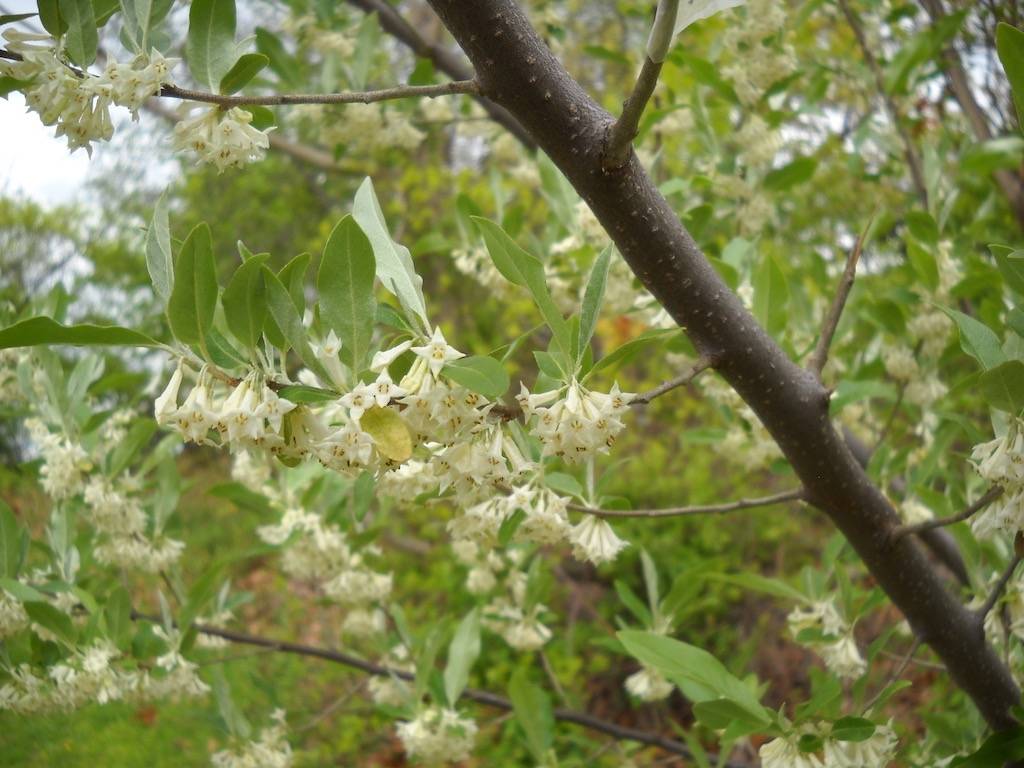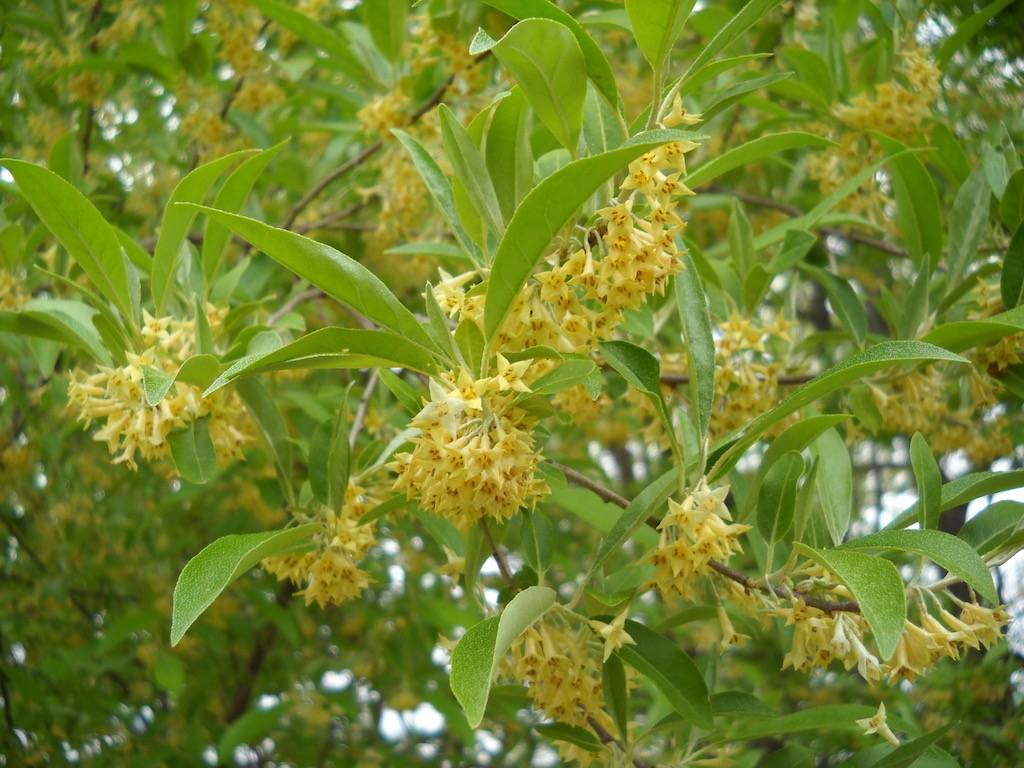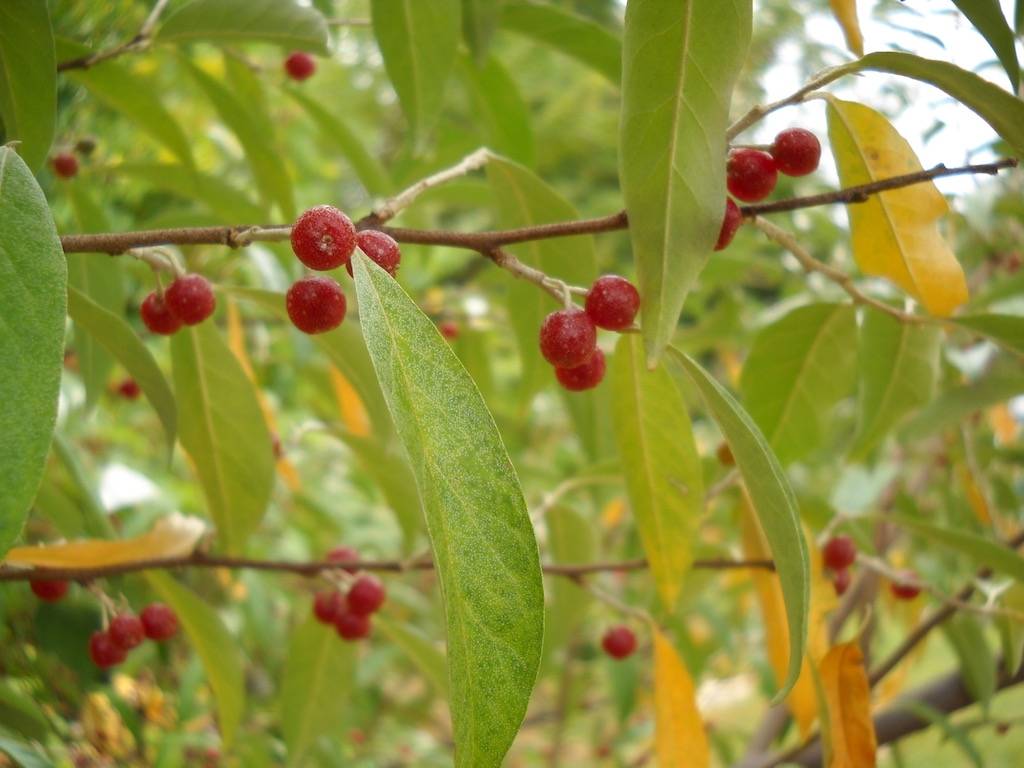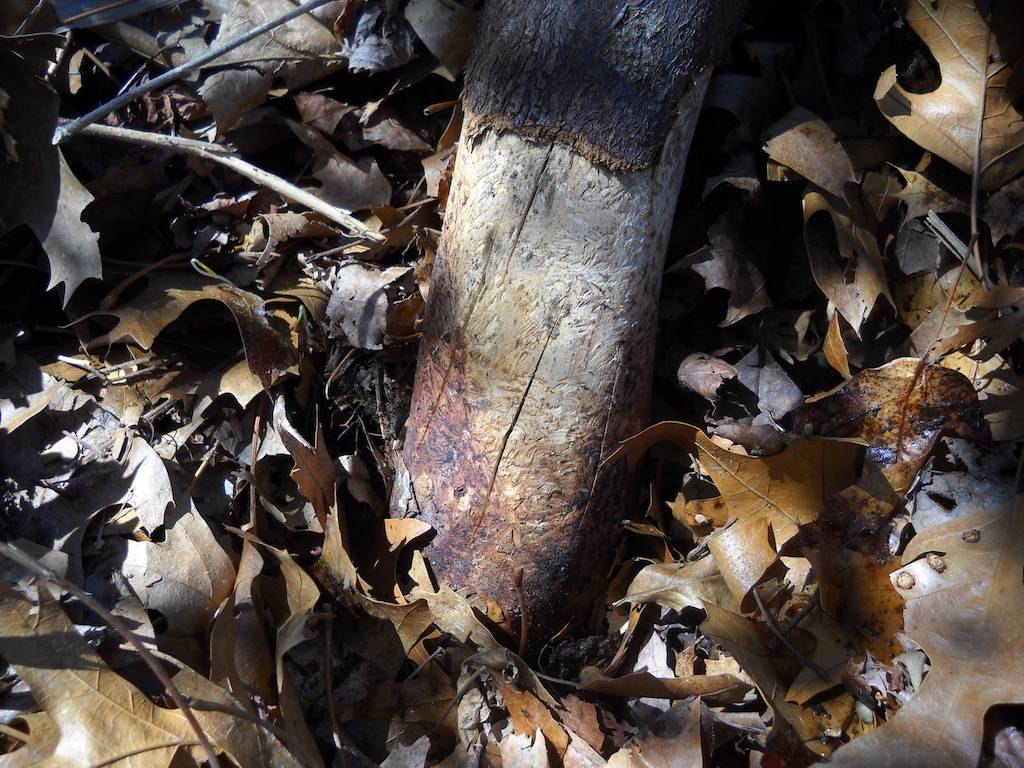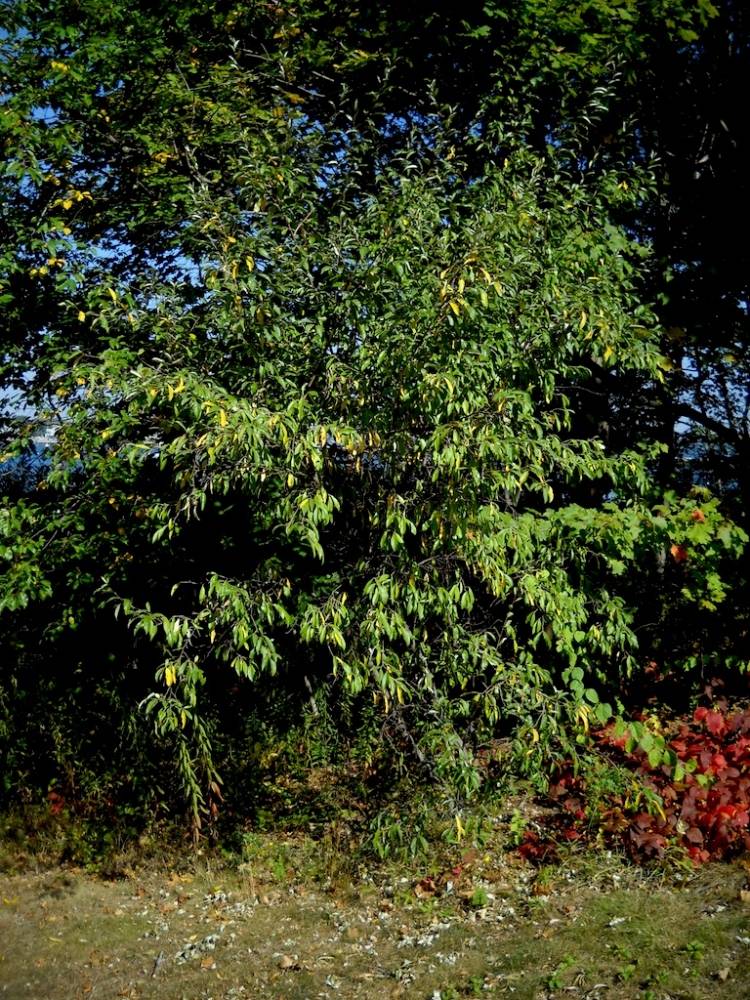autumn-olive
Despite its name, the autumn-olive is not related to the tree species that yields olive oil. It is a small deciduous tree native to China, Korea and Japan that was brought into the U.S. in 1830. It was planted extensively in disturbed environments in the 1950's to provide erosion control and wildlife habitat.
However, what was thought to be an ecological solution soon turned into a problem. It is able to thrive in poor habitats because it has root nodules that can fix atmospheric nitrogen. Other weed species also benefit from this and outgrow native species more adapted to a low-nutrient environment.
The abundant red berries it produces are attractive to many birds and mammals, especially during the colder months and thus the seeds are widely dispersed. The berries contain 17 times as much of the antioxidant lycopene as tomatoes and can be made into fruit leather, jams, jellies and sauces. There are only four individuals at Salter Grove but it is considered to be an invasive species elsewhere.

